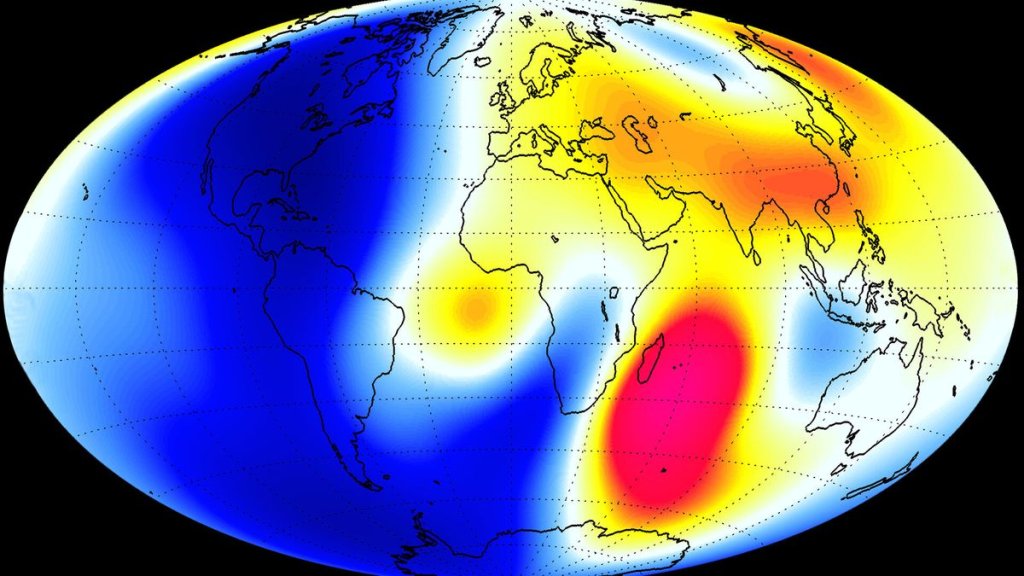
We need a better way to map Earth’s magnetic field. Finding it could win 1 of these teams $2 million (Image Credit: Space.com)
A technology competition to devise a new means of more accurately measuring Earth’s magnetic field is entering its final phase, with one competing team in particular utilizing quantum effects in diamonds to measure shifts in the magnetic field.
Scientists map and track Earth’s magnetic field using something called the World Magnetic Model (WMM), which was jointly developed by the British Geological Survey and the US National Geophysical Data Center. Because Earth‘s magnetic poles have a tendency to wander, the WMM must be updated regularly, at least every five years. Since the WMM is used by aviation authorities, NATO, defense ministries and shipping navigation, any inaccuracies could ultimately lead to potentially dangerous scenarios, such as ships and planes going off course.
And although we might not realize it, over a billion of us make use of Earth’s geomagnetic field in our daily lives as our smartphones contain a device that uses the WMM to account for the deviation between magnetic north and true geographical north, which is part of how your phone knows which way you are pointing it.
In an effort to spur advancements in how we measure Earth’s geomagnetic field, Luminary Labs in New York is holding the MagQuest competition. MagQuest has just announced which three teams will progress from phase 3, receiving $900,000 prize money in the process, and entering the final round and the chance to win $2.1 million.
Related: Listen to the terrifying rumble of Earth’s magnetic field being assaulted by a solar storm
First up is Canada’s SBQuantum, who have partnered with satellite technology company Spire Global to develop and launch their diamond-powered geomagnetic data collection from low-Earth orbit project on a cubesat. Their quantum magnetometers use a technology called nitrogen vacancy diamonds. These diamonds are specifically engineered so that their usual lattice of carbon atoms is disrupted by the placement of a nitrogen atom next to a small void. This frees up two electrons within the diamond, which subsequently have their quantum state excited by the application of green laser light. The excited electrons interact with the Earth’s magnetic field and emit red light, and he amount of red light indicates the strength and orientation of the magnetic field at that location.
Such measurements can be plagued with noise, and on space missions a magnetometer is usually placed on a boom sticking out from the spacecraft to isolate the instrument from sources of magnetic field noise coming the craft itself, while adding extra complexity, cost and risk to a mission. However, SBQuantum have developed machine-learning algorithms that can cut through this interference, allowing the quantum magnetometer to be housed inside a spacecraft.
This diamond-powered quantum magnetometer technology has already been tested by SBQuantum at NASA’s Goddard Spaceflight Center. As part of the final phase of MagQuest, SBQuantum and Spire Global must fly the magnetometers in space and successfully measure the magnetic field from low-Earth orbit.
“Testing the instrument in space represents a fantastic opportunity to show the entire industry what we have built, and to highlight the tremendous potential of quantum-enabled sensors not only for aerospace, but for various other industry verticals as well,” said David Roy-Guay, CEO and co-founder of SBQuantum, in a statement.
SBQuantum and Spire Global will be joined in the final phase of the competition by two other teams competing for the $2.1 million cash prize.
A group from the University of Colorado, Boulder, have designed COSMO, the Compact Space-borne Magnetic Observatory, which is a 6U (six-unit) cubesat, with a rubidium magnetometer at one end and the spacecraft components that produce the most magnetic noise at the other. The magnetometer in this case operates by measuring the magnetic spin of rubidium in Earth’s magnetic field.
A California-headquartered company called Stellar Solutions are utilizing technology that they previously developed for trying to predict earthquakes through electromagnetic emissions, to monitor the Earth’s magnetic field. Their Global Acquisition of Magnetic Measurements at Altitude (GAMMA) project involves adding magnetometers as small, easily integrated payloads piggybacking on already planned satellite missions, therefore reducing costs.
Iota Technology is in partnership with Oxford Space Systems at the Harwell Science Campus at Didcot in the UK and AAC Clyde Space who have offices all over the world, in building SIGMA, a Satellite for Geomagnetic Analysis. This is a 3U (three-unit) cubesat that features a digital magnetometer on the end of a deployable boom.
The Royal Meteorological Institute of Belgium, in partnership with the Woods Hole Oceanographic Institution in the U.S., is taking a different tact with their Terrestrial and Seafloor Automated Magnetic Observatories project that will be based on Earth rather than in space. Taking measurements on Earth is more precise simply because the variations in the magnetic field originate within the Earth, not in space. The Terrestrial and Seafloor Automated Magnetic Observatories project involves an array of networked, automated magnetic observatories that can be distributed either on land or on the seafloor, and which can be deployed at almost any location to ensure complete coverage.
The final phase of the MagQuest challenge will last for 20 months from September 2023 onwards, in which the three finalists must successfully test their experiments out in the field. Space.com wishes all teams the best of luck!





